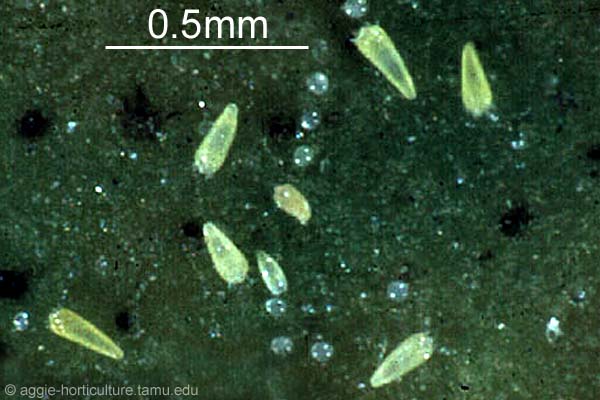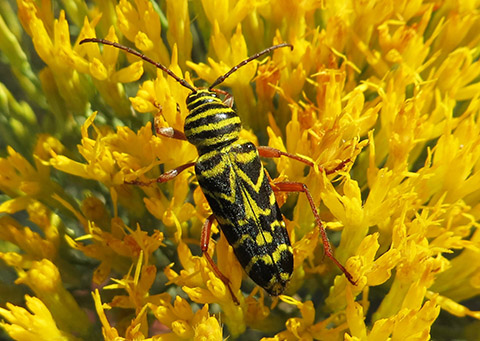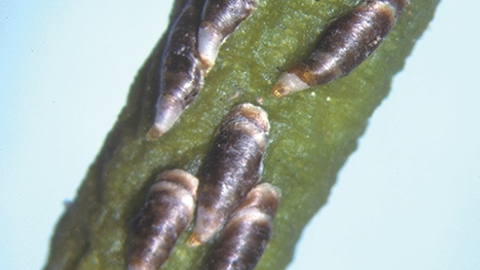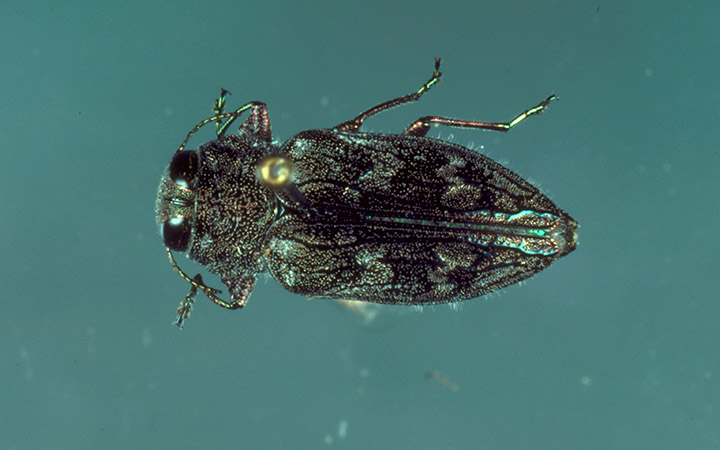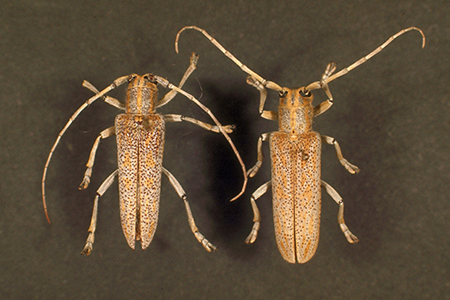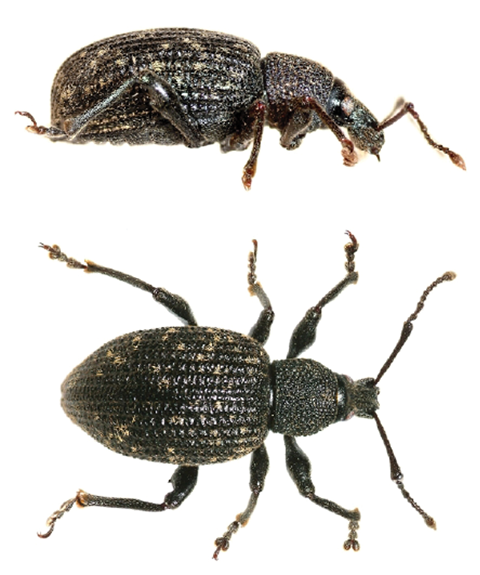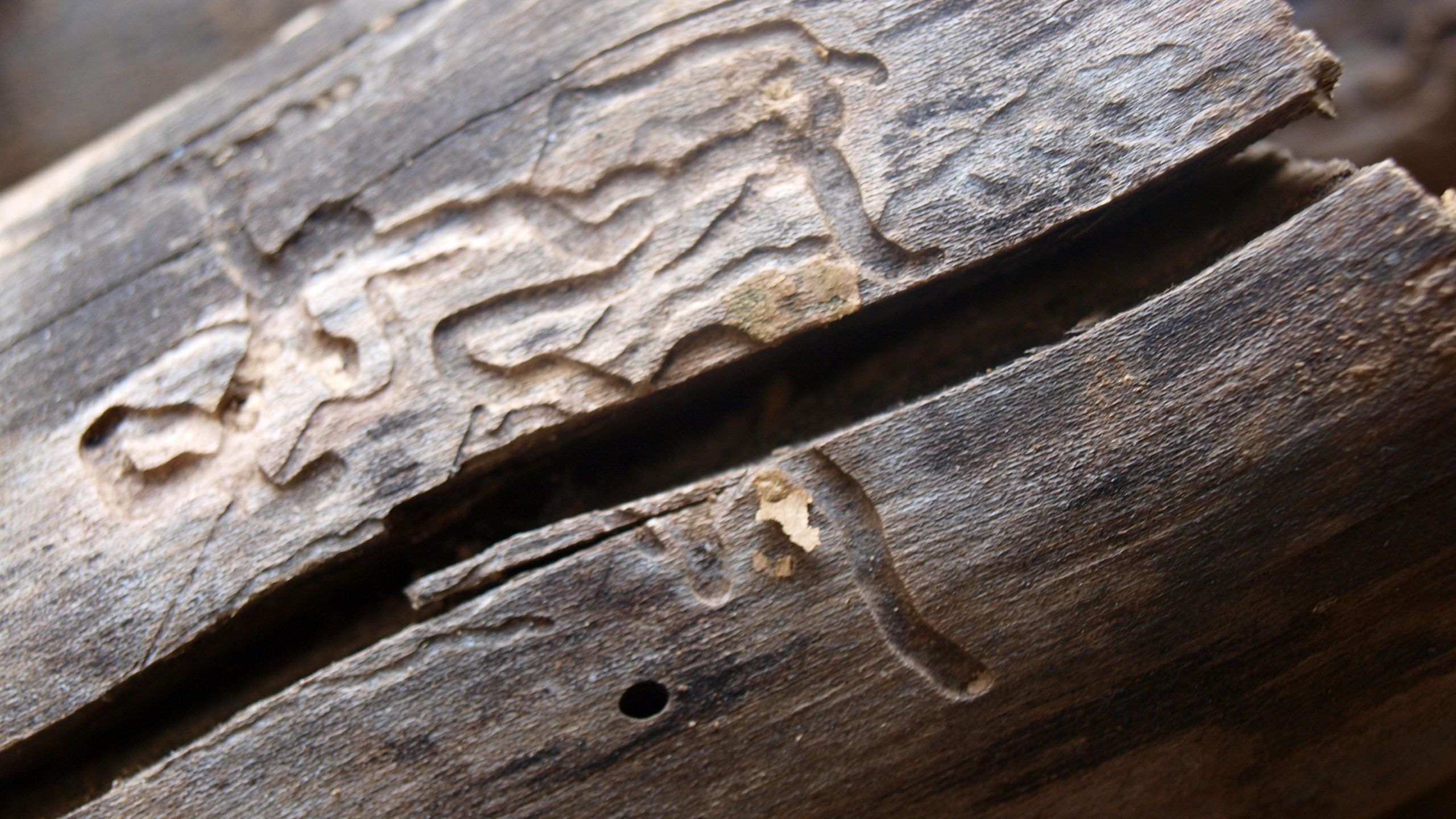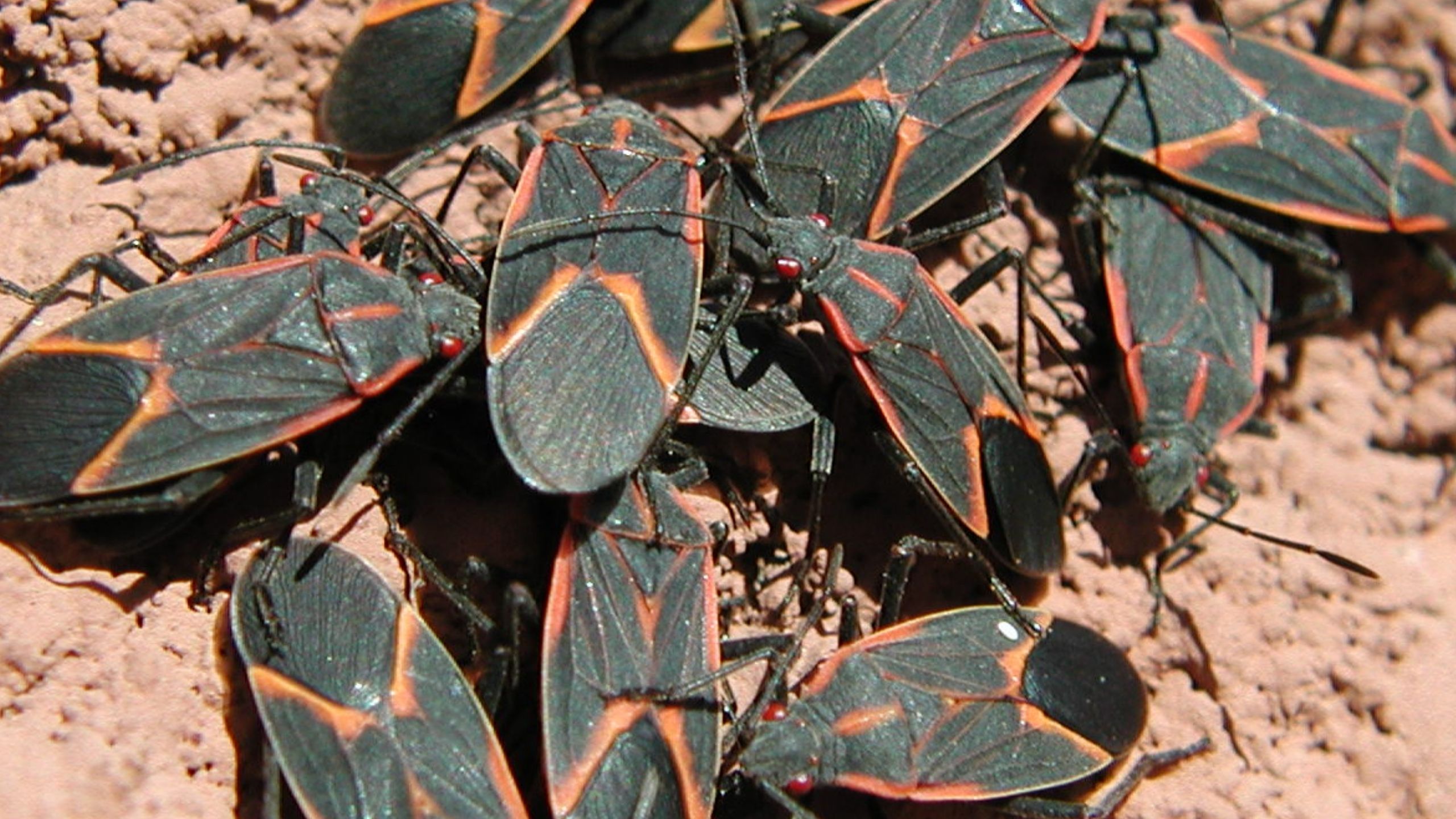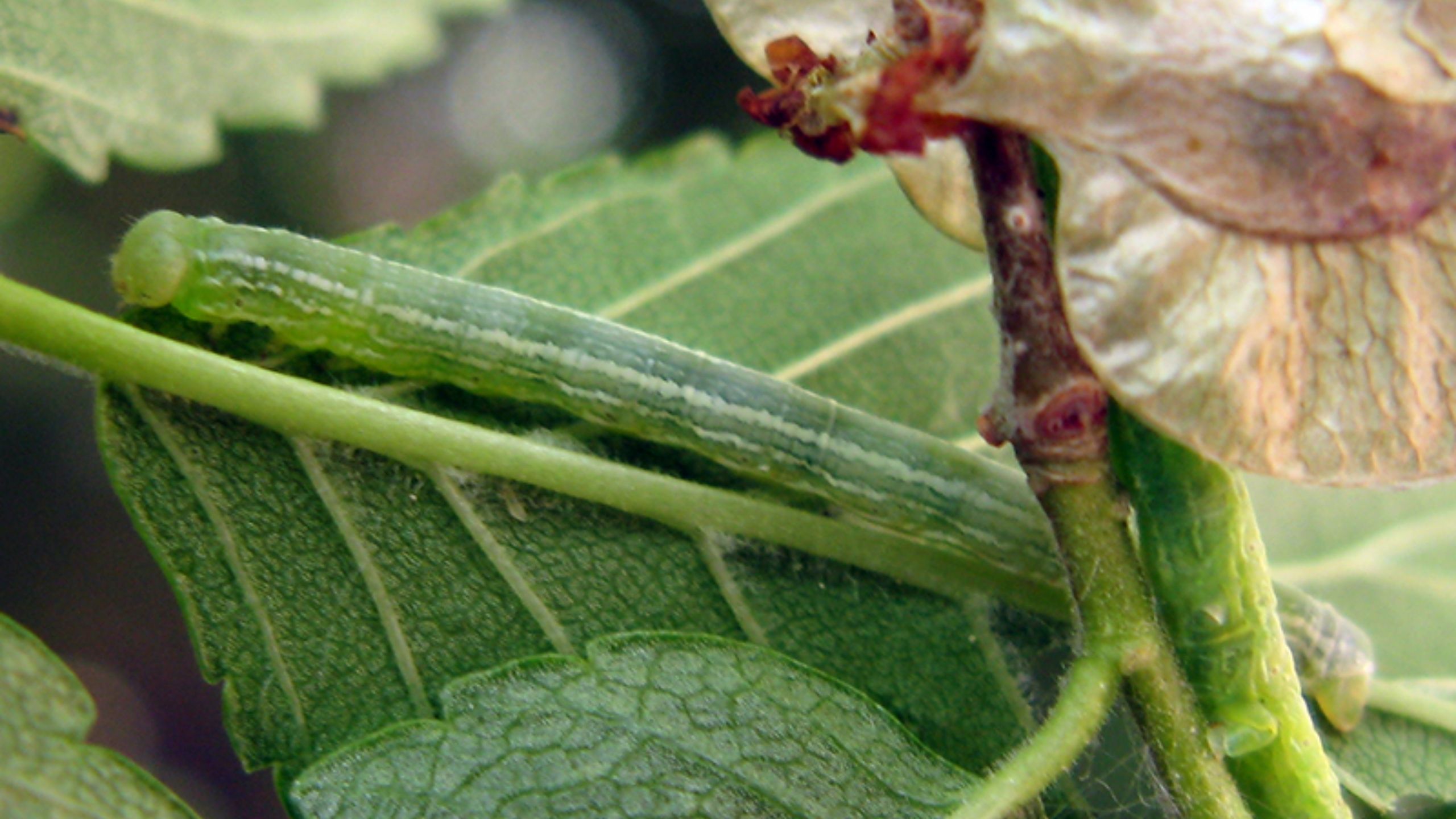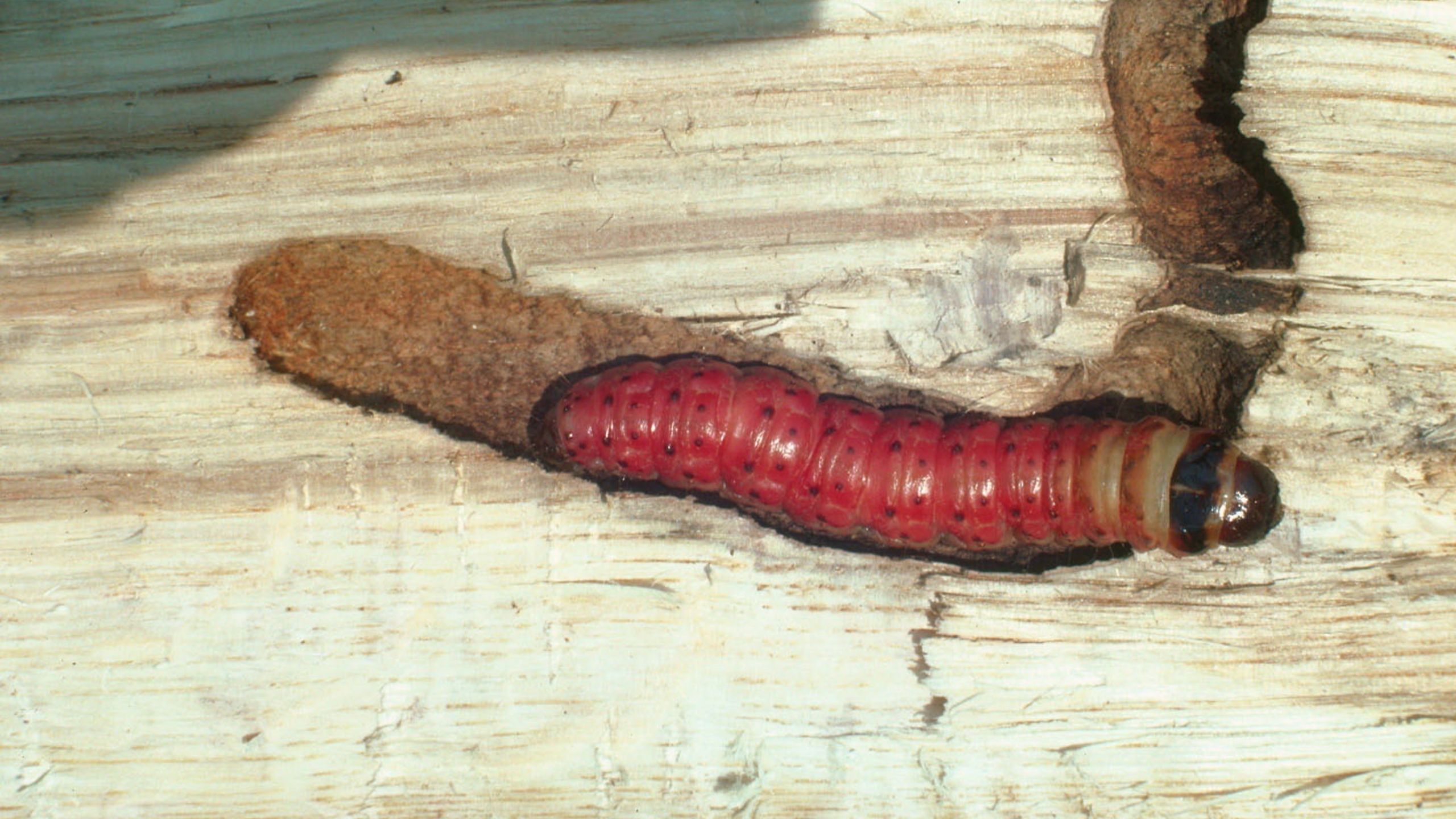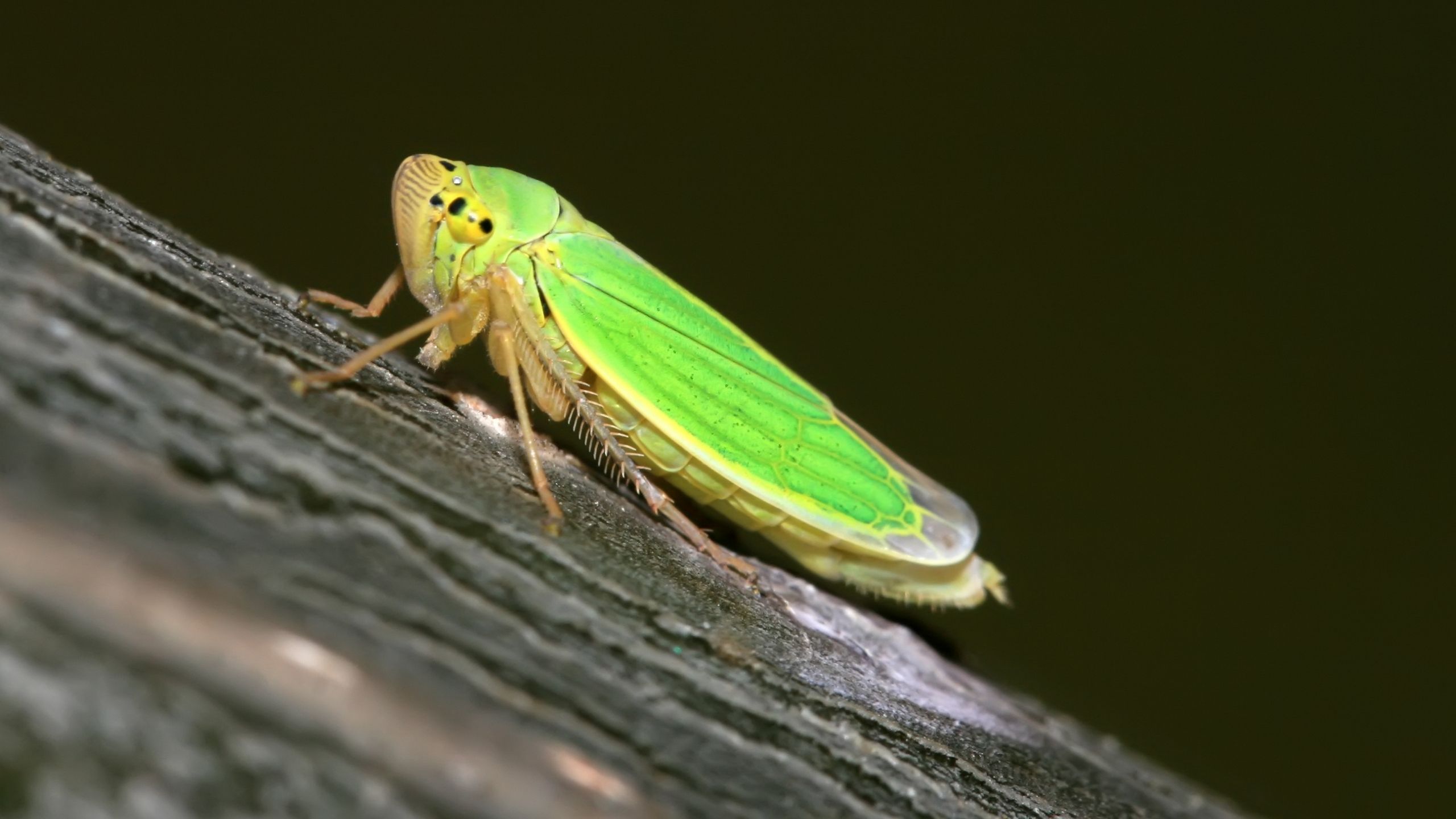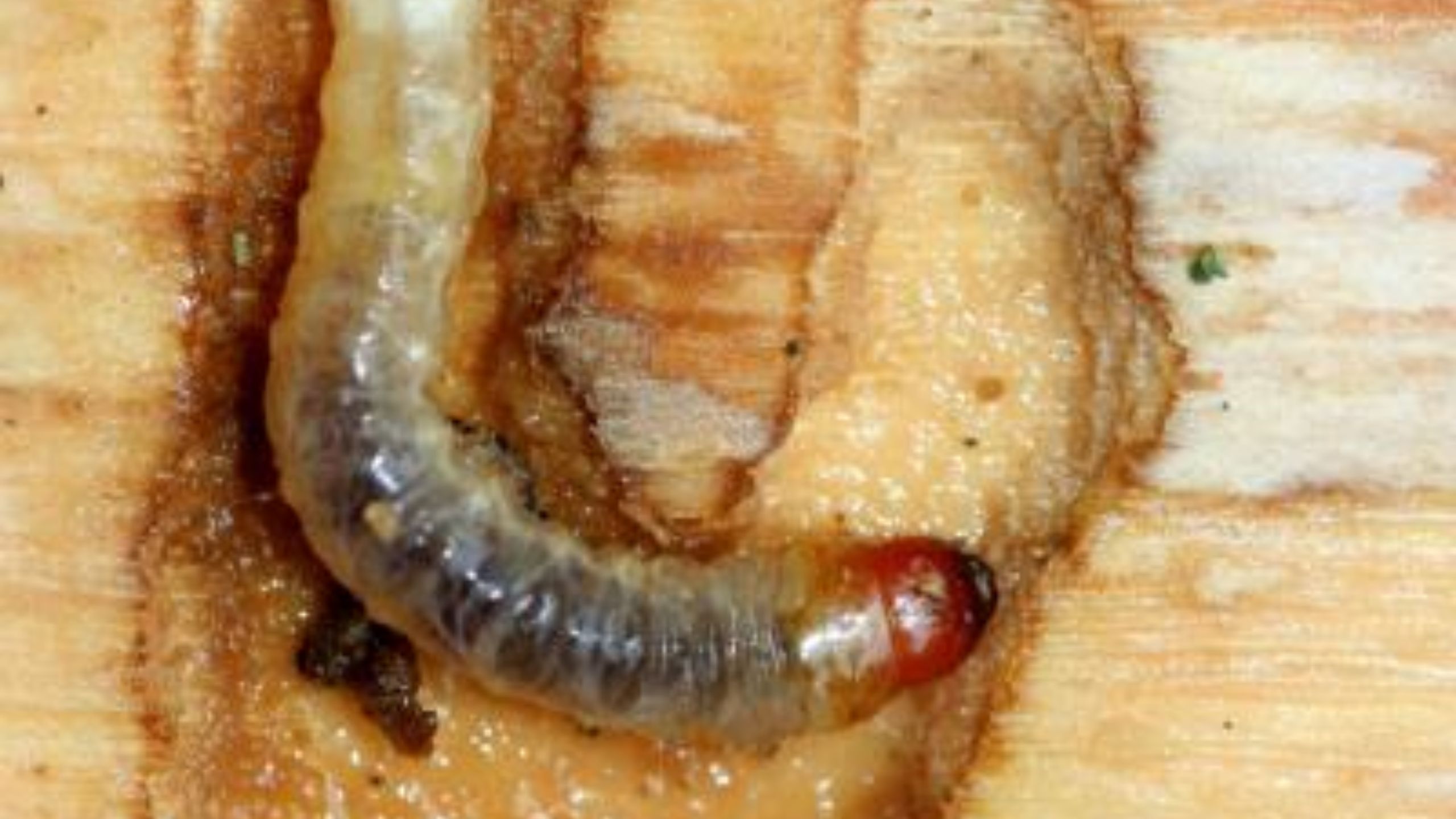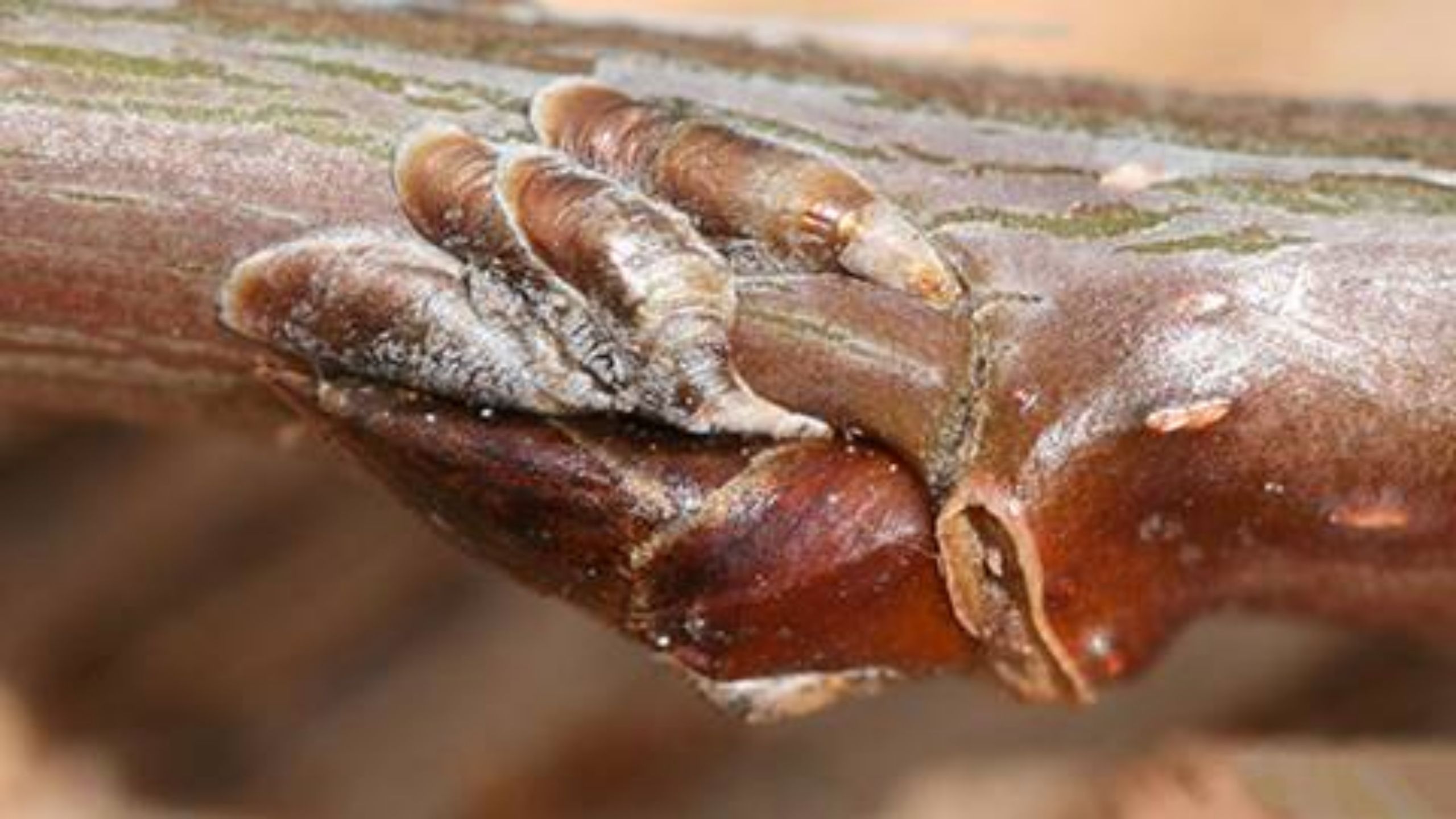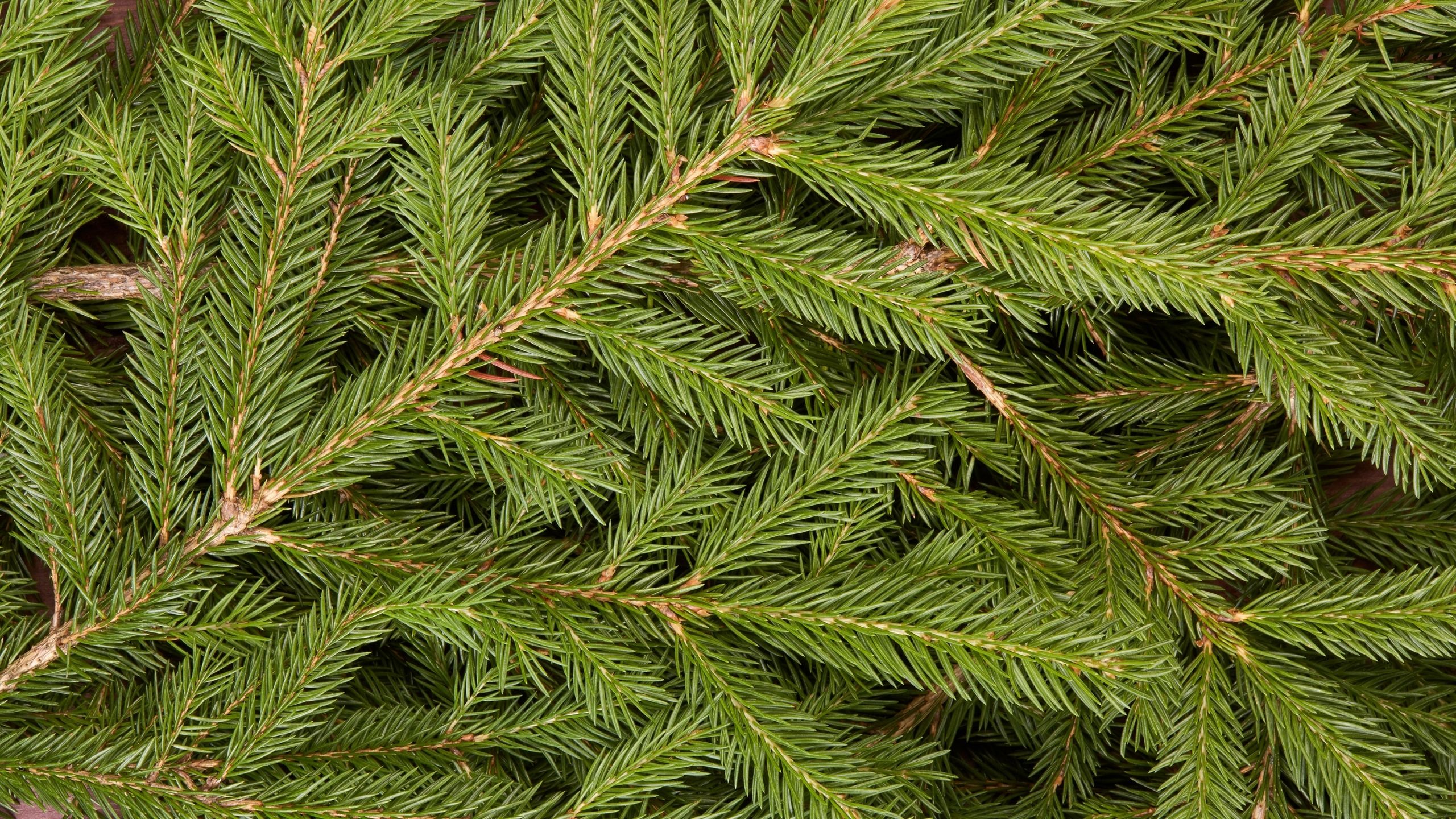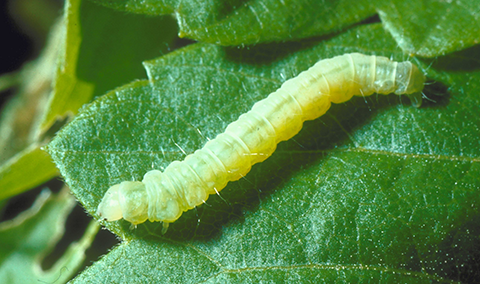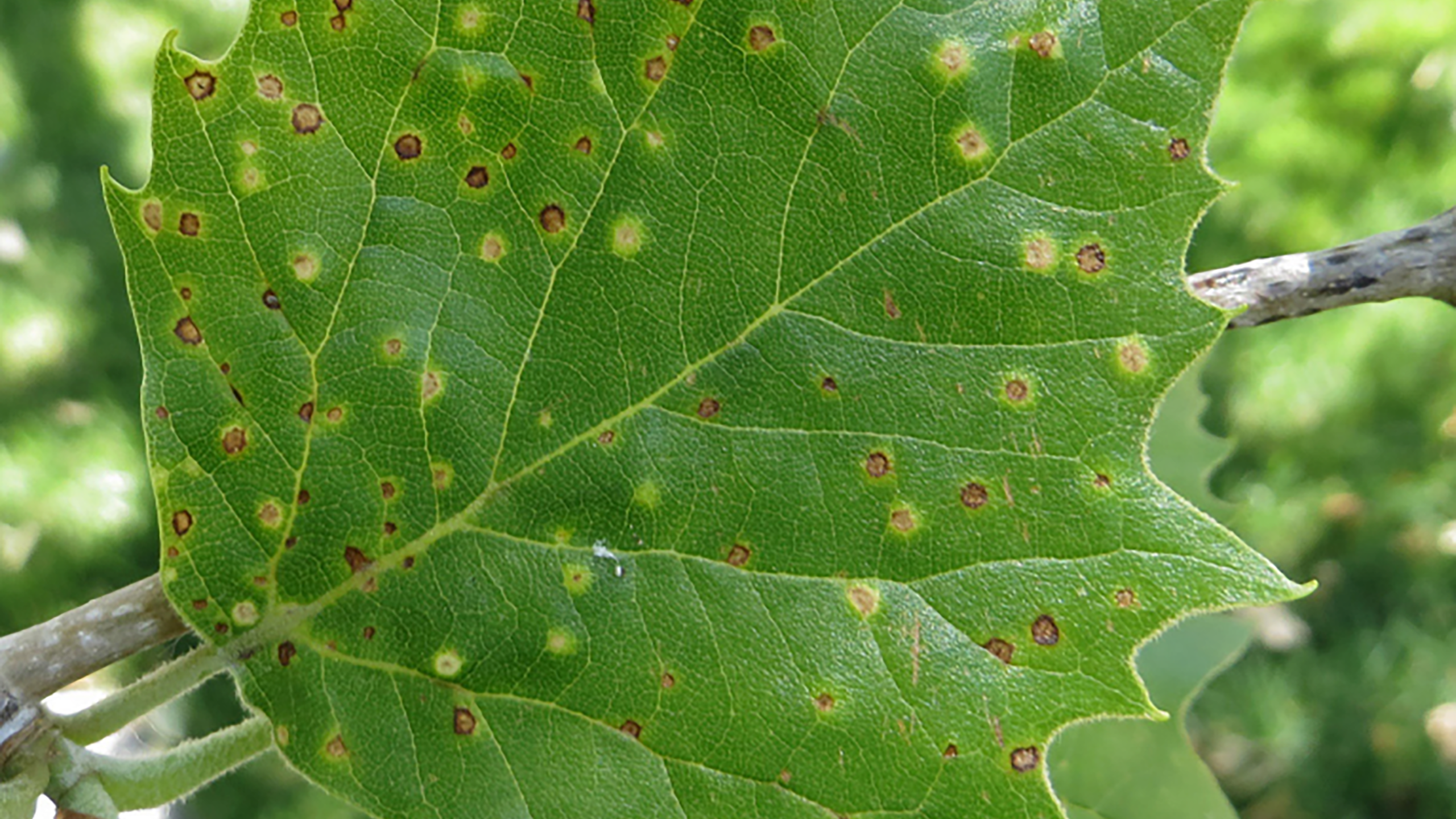Poplar Bud Gall Mite
August 2023
Marion Murray, Extension IPM Specialist and Ryan Davis, USU Arthropod Diagnostician (No longer at USU)
Quick Facts

mites.
- Adult poplar bud gall mites are microscopic, reddish, and spindle-shaped.
- Many species of poplars, cottonwoods, and aspens are affected by poplar bud gall mites.
- The mites feed inside leaf buds, causing them to swell into woody galls 3 to 4 cm in diameter.
- Repeated attacks may stress the tree, leaving it susceptible to other problems.
- They are controlled by pruning and insecticide application.
The poplar bud gall mite (Eriophyes parapopuli) is an eriophyid mite. It is microscopic and about one-fourth the size of a spider mite (0.2 mm long). Adults are reddish and spindle-shaped.
Poplar bud gall mite hosts include species of poplars, cottonwoods, and aspens. The mite causes woody cauliflower-like galls to develop from leaf buds.
Biology and Habits
Poplar bud gall mites spend most of their lives inside their protective galls. They reproduce rapidly with a generation (egg to adult) developing in as little as 2 weeks, giving rise to as many as eight generations per year.Poplar bud gall mites overwinter inside galls on the tree or under bud scales. Mites start activity in April and continue through September. From about May through August, some mites migrate to new leaf buds and form new galls. Mites may remain active inside a gall for up to 4 years.
Eriophyid mites do not have wings, but their small size allows them to infest other trees by drifting on wind currents. Another mechanism of spread is incidental travel on birds and insects.
Damage
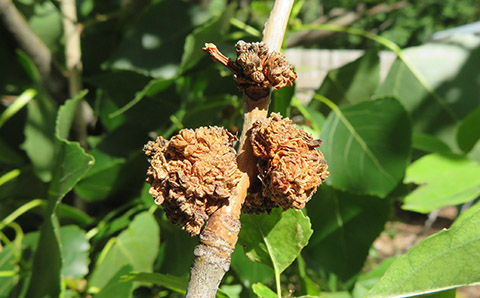

Feeding by poplar bud gall mite prevents leaf buds from developing into normal leaves and stems. Instead, the buds develop into woody galls 3 to 4 cm in diameter. The galls have a cauliflower-like appearance and are small and green early in the season (Fig. 1). By late summer, they have enlarged and turned a brick red or blackish brown (Fig. 2).
Older galls dry out, become hard, ridged and furrowed, and turn a tan or grayish color. These abandoned galls will persist on the tree another season before falling off.
Lower branches are usually more heavily infested, with galls occuring primarly on 1-year-old twigs. Branches become stunted, crooked, or have sparse foliage. Several years of repeated attack may cause the ends of the branches to die back beyond the galls. Leaf loss caused by gall formation may cause stress in the tree, making it susceptible to other problems such as attacks by wood borers, including the poplar borer. Besides the above effects, aesthetic damage is another consideration since heavy infestations are unsightly.
Control
Galls or the affected twigs or branches should be pruned in early spring when the tree is dormant and the mites are still overwintering in the galls (Fig. 3). Take care to remove all galls, since a single gall contains many mites and is capable of reinfesting the tree. Bury, burn, or otherwise dispose of removed galls. Pruning is practical for a few small trees but may not be for large trees or if many trees are involved.
For heavy infestations, apply an insecticide after budbreak, usually about mid-April or later. Insecticides recommended for this pest include dormant oil (an organic option) or carbaryl. Carbaryl is highly toxic to bees and should not be applied when they are active.
The best way to avoid problems with poplar bud gall mite is to provide adequate moisture and fertilization to minimize stress in the tree. In addition, select disease-resistant tree varieties. For example, a more tolerant poplar variety is ‘Manitou’. Check with your local tree nursery for other options. Hybrid poplars appear to be more susceptible.
References
- Herman, D. E., Stange, C. M., & Quam, V. C. (n.d.). The North Dakota Tree Handbook. North Dakota State University and Centennial Trees Program.
- Kalischuk, A. R., Gom, L. A., Rood, S. B., & Floate, K. D. (2011). Intersectional cottonwood hybrids are particularly susceptible to the poplar bud gall mite. Canadian Journal of Botany, 75(8), 1349-1355.



